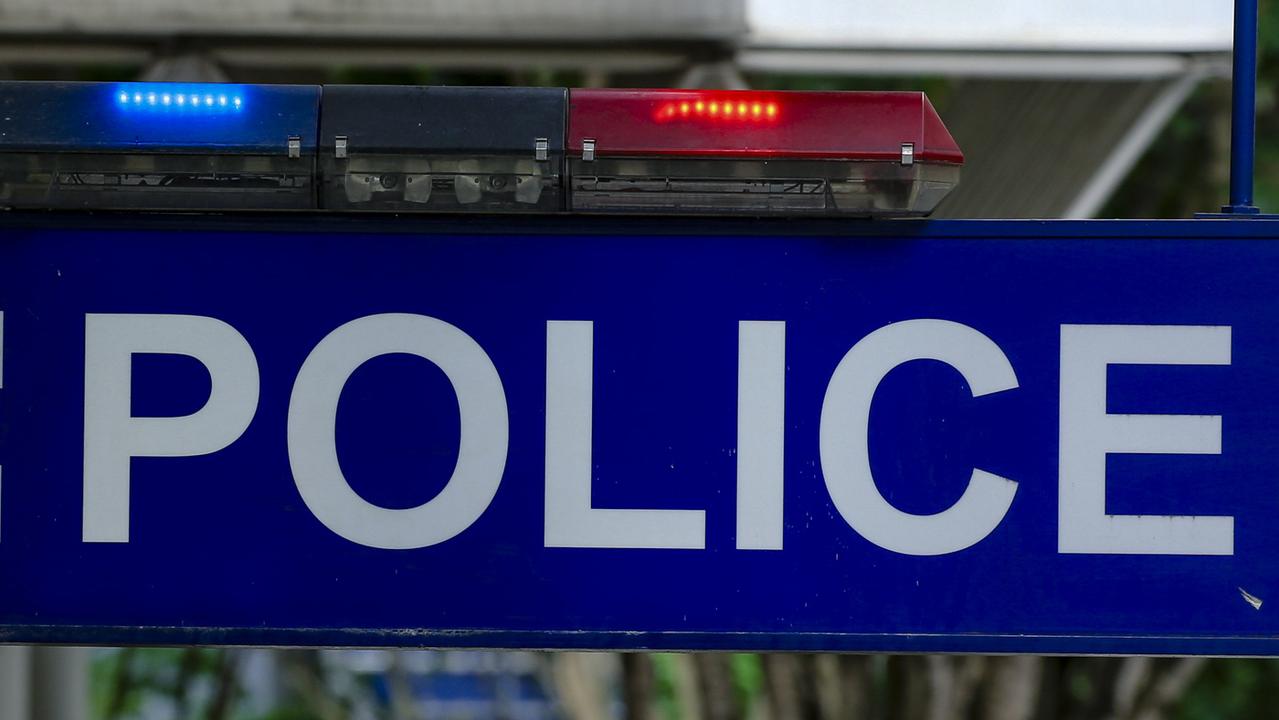Coronavirus stimulus package includes $750 cash payments and support for apprentices and small businesses
More than six million Aussies will get cash payments of $750 as part of the government’s $17.6 billion coronavirus stimulus package.

News
Don't miss out on the headlines from News. Followed categories will be added to My News.
More than six million Australians will be getting a cheque for $750 as part of the Morrison Government’s $17.6 billion coronavirus stimulus package.
Households receiving government benefits including pensioners and those getting Newstart, Carer’s Allowance and Family Tax Benefits will get the one-off payments from March 31.
It’s hoped the payments will inject cash into the economy if the money is spent and will help keep small and medium businesses running.
A total of 3.6 million pensioners will receive the one-off payment, as well as 1.1 million on Youth Allowance and Newstart; and 1.5 million other Australians including veterans and those on payments such as the Farm Household Allowance and Family Tax Benefit.
Prime Minister Scott Morrison the package would support cashflow, boost investment and provide immediate demand stimulus to the Australian economy.
“We have taken the decision to put this stimulus in place that has the obvious impact on the Budget outcome for 2019-20,” he said.
“Australians know that this needs to be the priority and our government agrees with that priority and that’s why we’ve taken the decision to put these measures in place.”
The Prime Minister said other measures included supercharging the instant asset write-off, backing business investment with an accelerated depreciation scheme and a cashflow boost for small and medium-sized employers.
About 690,000 businesses across Australia will be able to get grants for up to $25,000.
The government will also support employers to keep 117,000 apprentices in jobs over nine months.
“Importantly, these measures do not extend beyond 30 June next year and that means that gives the budget and the community the opportunity to bounce back shortly,” Mr Morrison said.
Treasurer Josh Frydenberg said the package was worth $17.6 billion, $11 billion of which would be spent before June 30.
“Importantly, $3 out of every $4 spent will go to backing business and keeping Australians in a job,” Mr Frydenberg said.
The PM will also address Australians tonight at 7pm after delivering his coronavirus stimulus package this morning.
RELATED: Follow the latest coronavirus updates
RELATED: PM urges businesses to show patriotism in face of virus outbreak
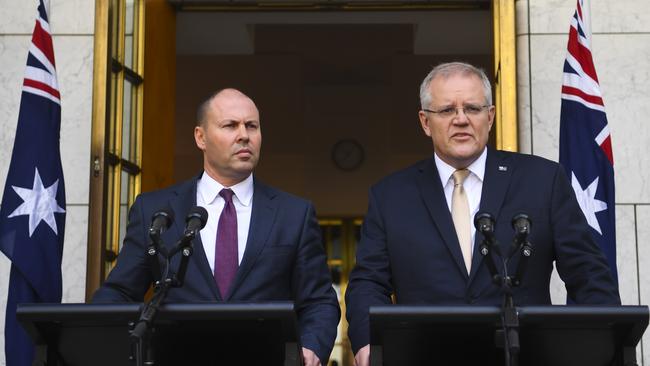
Some details of the package were revealed early and included that small businesses would get tax breaks and subsidies.
About $6.7 billion over four years will be spend on helping small businesses keep running amid the outbreak and a $2.4 billion health package unveiled on Wednesday that includes the creation of 100 fever clinics.
PACKAGE WAS ‘LARGER THAN EXPECTED’
Today’s $17.6 billion package was much bigger than originally expected and the payments of $750 where higher than earlier reports suggested.
“The government’s package, at $17.6 billion, is larger than expected reflecting the fast moving nature of events,” Ernst & Young chief economist Jo Masters said.
Even with the stimulus package she said a technical recession was still possible as the economy had almost certainly contracted in the March quarter and it was unclear whether the second quarter would also be impacted.
“While many of the measures announced are automatic – so not slowed down by the need to fill out forms and lodge – it takes time for spending to feed through the economy,” Ms Masters said.
“The economy, though, should recover once the pandemic is contained and supply disruptions ease. The timing of that is highly uncertain.
“The economy will be supported by fiscal policy settings, low interest rates and the lower Australian dollar but much will depend on how households respond.”
The Australia Institute said the package was the right size but the shape was wrong.
“The most effective form of stimulus makes up less than a quarter of the total package,” Australia Institute senior economist Matt Grudnoff said.
“The Prime Minister asserted $3 in every $4 dollars of stimulus would go to business — it should be other way round. Common-sense and recent history tells us that business don’t spend when their sales are falling.
“The most effective part of the package is the $750 to welfare recipients. We know people living on the brink spend any extra money they receive on essentials, and this will support demand in the economy.”
Mr Grudnoff said the instant asset write-off and accelerated depreciation measures were likely to be under-subscribed because businesses would be reluctant to spend money if their sales were falling.
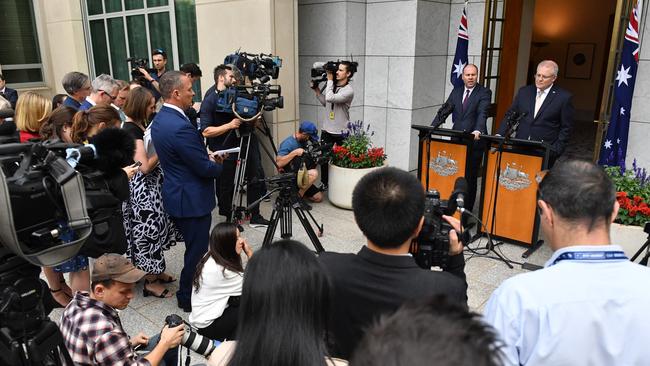
Meanwhile, the Australian Council of Social Service (ACOSS) welcomed the one-off payments but still called on the government to urgently increase Newstart by $95 per week
“The payment will be welcome short-term relief but it’s nowhere near enough,” ACOSS CEO Cassandra Goldie said.
“Leading economists urged the government to increase Newstart ongoing to build consumer confidence and to guarantee that the payment would be spent into the real economy.
“We know that increasing Newstart by $95 per week ongoing would inject $4 billion into the economy a year and generate more than 12,000 jobs, helping to deliver the ongoing confidence business is crying out for.”
Ms Goldie said some of the $750 payments would go to households that don’t qualify for a pension because they have millions in superannuation assets.
“These households are less likely to spend than someone living on $40 a day,” she said.
ACOSS is also backing calls from the ACTU for the government to guarantee at least two weeks leave for people prevented from working during the outbreak.
“While we welcome the waiver of some wait times for social security payments, such as Sickness Allowance, this is not the answer for people unable to work due to coronavirus,” Ms Goldie said.
“We also need a guarantee that all wait times and mutual obligation requirements for social security payments are waived during the coronavirus outbreak. The Government must also ensure that Centrelink is better resourced to handle the distribution of payments.”
Ms Goldie said a missing gap in the package was investment in public infrastructure that could be quickly rolled out, particularly in social housing construction, that would reduce homelessness and create jobs.
“Another missing gap appears to be support for community service organisations on the front line of responding to the economic and health challenges, such as homelessness and childcare services,” she said.
Here are some of the measures from the government’s stimulus package:
KEEPING APPRENTICES IN JOBS
Under the plan, the government will offer small businesses with fewer than 20 employees, up to $21,000 per apprentice ($7000 each quarter) in wage assistance, to retain existing apprentices and trainees.
The subsidies are expected to reach around 117,000 apprentices and are worth about $1.3 billion.
The cash injection will subsidise apprentice wages for up to nine months with the aim of keeping them in a job.
HANDOUTS AND TAX BREAKS FOR BUSINESSES
There will be two measures to boost cashflow to small and medium sized employers.
The first is a payment of up to $25,000 to businesses that employ people and have a turnover of up to $50 million.
“The payment will be delivered automatically through the tax system so no new forms will be required, and these payments are tax free, so they’ll be delivered automatically and these payments are tax free,” Mr Frydenberg said.
It’s estimated the measure will cost $6.7 billion over four years, benefiting almost 700,000 businesses and 7.8 million workers.
The second is a 50 per cent wage subsidy for apprentices and training in businesses with less than 20 employees.
The government will also spend $700 million over four years to expand the instant asset write-off.
The instant asset write-off threshold will also be raised from $30,000 to $150,000 and access expanded to businesses with an annual turnover of $500 million.
“Any such purchase from now until 30 June, including a truck, a tractor, a shop fit-out, can be written off immediately.” Mr Frydenberg said.
There will also be a 50 per cent accelerated depreciation deduction over and above what businesses can already deduct in the first year and is available for 15 months to 30 June 2021.
RELATED: Disturbing new coronavirus cases in Australia
RELATED: Banks smashed as Aussie market falls
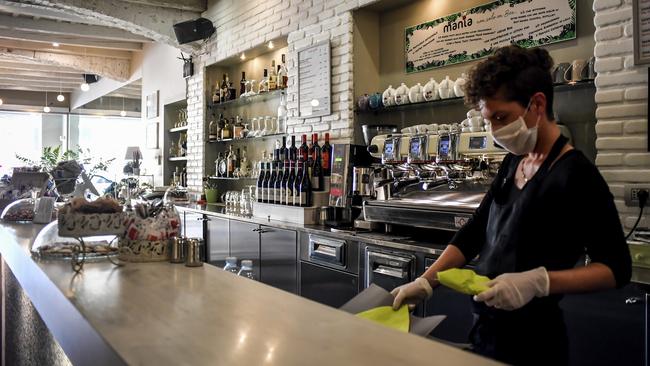
BOOST FOR PENSIONERS
Deeming rates – used to calculate how much some pensioners are earning on their financial investments – will be cut by 50 basis points.
“Both the lower and the upper deeming rates will be reduced by 0.5 per cent, benefiting around 900,000 Australians, including 560,000 aged pensioners,” Mr Frydenberg said.
This will cost the government $600 million.
In addition, about 2.4 million pensioners will get one-off payments of $750.
$750 PAYMENTS FOR THOSE ON BENEFITS
The Morrison Government’s $750 cash payments will flow to people automatically from March 31.
About 6.5 million Aussies will receive the payment, including those on Newstart, the Disability Support Pension, Carers’ Allowance, Youth Allowance, veterans support payments, Family Tax Benefits and Commonwealth senior health card-holders.
The payment will be tax free and will not count as income for Social Security, Farm Household Allowance and veteran payments.
There will be one payment per eligible recipient. If a person qualifies for the one off payment in multiple ways, they will only receive one payment.
Payments will be from 31 March 2020 on a progressive basis, with over 90 per cent of payments expected to be made by mid-April.
“Households will receive a stimulus payment of $750 across the full gambit of those who receive all sorts of benefit payments,” Mr Morrison told reporters today.
“The biggest beneficiaries of that will be pensioners. They comprise around half of those who will receive those payments, but they also will be extended to those in family tax benefits, which obviously goes to those in earning households.”
The payments will cost the government $4.8 billion.
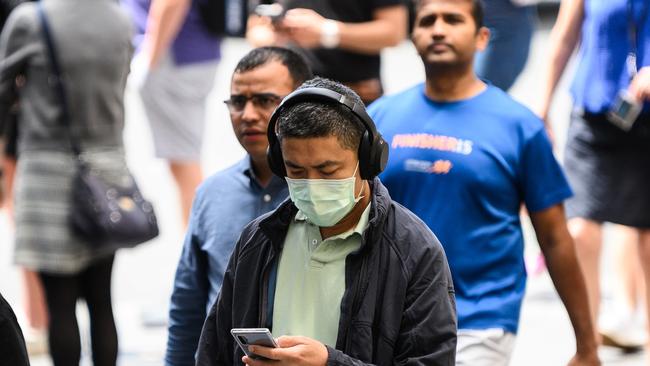
BOOST FOR TOURISM AND OTHER IMPACTED SECTORS
A $1 billion fund led by the Minister for Trade, Tourism and Investment, Minister Simon Birmingham, will be established to provide targeted support to those most impacted by the outbreak, including those who rely heavily on Chinese markets including the tourism industry and crayfish businesses.
It will cover things like waiving marine park fees and National Park fees in Kakadu and other places.
“A coronavirus fund is being established designed to target those areas and provide assistance that are most heavily by the spread of the virus,” Mr Frydenberg said.
“It initially will be a $1 billion fund. This will include the waiver of certain fees and charges for tourism businesses operating in Commonwealth National Parks, and the Great Barrier Reef Marine Park, increasing domestic tourism promotion, and additional assistance through Austrade to address supply chain breakdowns.
“As occurred with the bushfires, the ATO will also be providing relief for those significantly affected with deferral of various tax obligations by up to four months.”
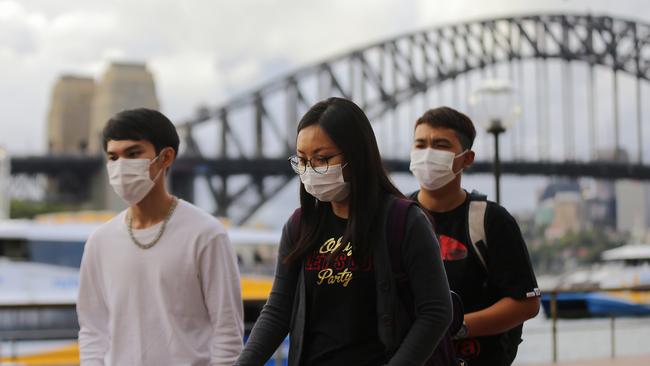
SURPLUS IS DEAD
Finance Minister Mathias Cormann has confirmed to ABC’s RN Breakfast that the government’s promised surplus won’t happen.
“People can do the maths,” he said. “This is obviously not going to be a surplus year, 2019-20.”
Treasury expects the virus will detract 0.5 percentage points from Australia’s growth figures in the March quarter and experts say Australia could be heading for a recession.
Treasurer Josh Frydenberg said the package would put Australia in “the strongest possible position” to deal with the virus fallout.
“The government has worked hard over the last six and a half years to return the budget to balance so we have the flexibility to respond to the serious economic challenges posed by the coronavirus,” he said.
PM CALLS FOR BIG BUSINESS SUPPORT
Meanwhile, Mr Morrison has urged big business to support workers during the coronavirus crisis or risk brand damage.
“I’d be encouraging employers to take a flexible and forward-leaning approach in supporting their employees during this process,” he told reporters in Canberra on Wednesday.
Mr Frydenberg met with bank CEOs to discuss the impact of the virus on the economy.
“Australia’s banking system is strong and well capitalised to support households and businesses during this challenging time,” he said.
Banks will offer a range of assistance, from waiving fees and charges to interest-free periods, debt consolidation and a deferral of scheduled loan repayments.
Opposition Leader Anthony Albanese said Labor would support any necessary funding for the virus response.
“The cost of inaction will be far greater than the cost of action,” he said. Mr Albanese said workforce issues would have to be solved, particularly for health sector staff.
The Australian Council of Trade Unions has demanded the government legislate two weeks of paid leave for all workers to deal with the virus.
-With AAP
Originally published as Coronavirus stimulus package includes $750 cash payments and support for apprentices and small businesses

